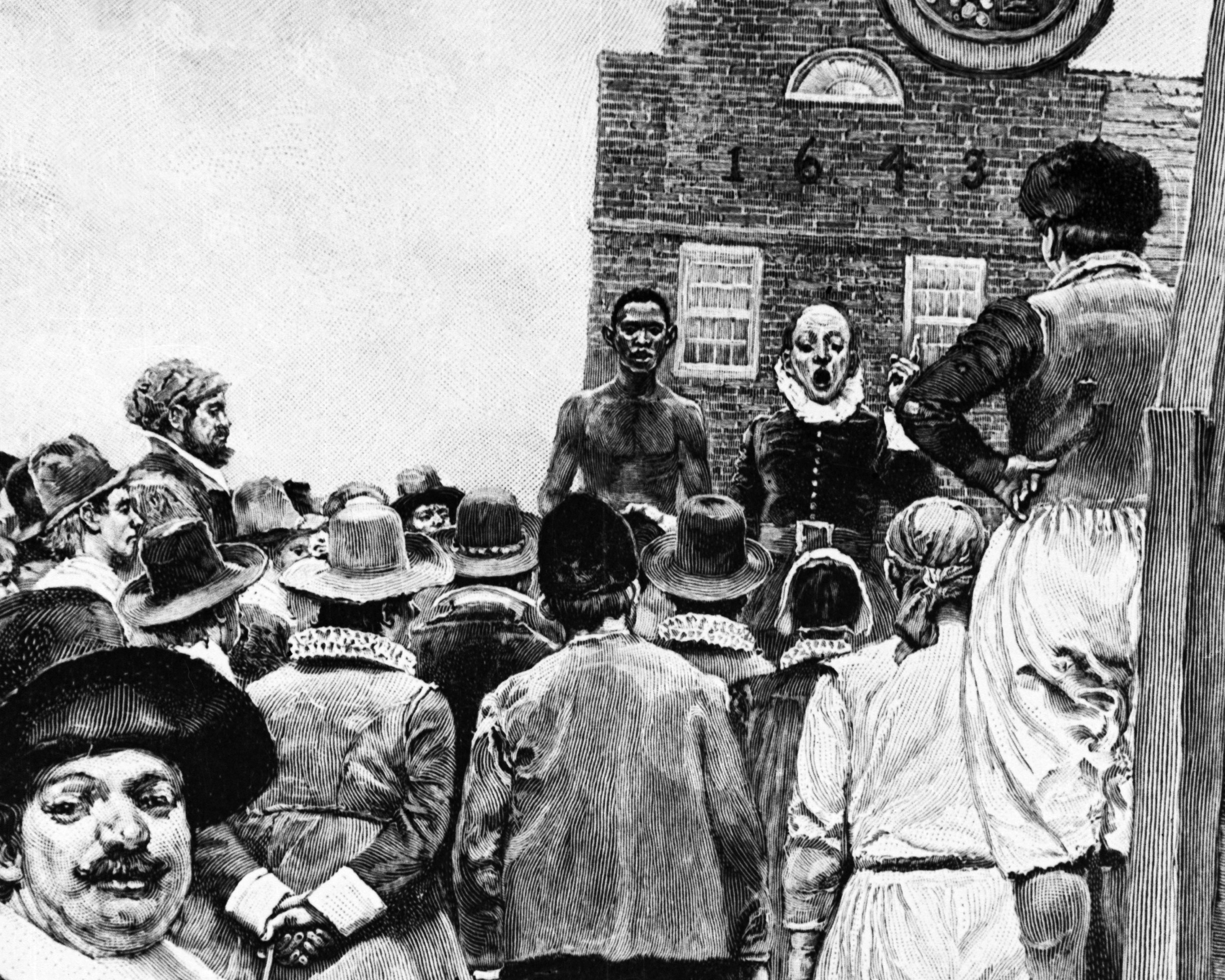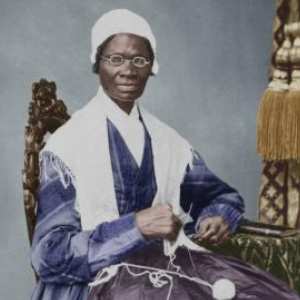Welcome to DU!
The truly grassroots left-of-center political community where regular people, not algorithms, drive the discussions and set the standards.
Join the community:
Create a free account
Support DU (and get rid of ads!):
Become a Star Member
Latest Breaking News
Editorials & Other Articles
General Discussion
The DU Lounge
All Forums
Issue Forums
Culture Forums
Alliance Forums
Region Forums
Support Forums
Help & Search
American History
Showing Original Post only (View all)NY Slave Revolt of April 6, 1712: Prelude To Decades of Hardship; Sojourner Truth, Dutch New York [View all]
Last edited Mon Apr 10, 2023, 10:44 AM - Edit history (1)

- Illustration of the New York slave market in the colonial era.
_______
- 'The New York Slave Revolt of 1712 Was a Bloody Prelude to Decades of Hardship. Smithsonian Magazine, April 6, *2016. -Ed. 304 years ago today, a group of black slaves rose up against white colonists in New York.
New York City may have a reputation for being a socially progressive place to live, but during the 18th century, it was a major hub for the North American slave trade, with thousands of men, women and children passing through the slave market that operated in the heart of what is now the financial district. On the night of April 6, 1712, this came to head when a group of New York slaves took up arms and revolted against their captors. Life was wretched for the slaves brought to New York. Many of the city’s early landmarks, from City Hall to the eponymous wall of Wall Street were built using slave labor.
The city even constructed an official slave market in 1711, Jim O’Grady reported for WNYC News in 2015. "It was a city-run slave market because they wanted to collect tax revenue on every person who was bought and sold there," historian Chris Cobb told O’Grady. "And the city hired slaves to do work like building roads." Unlike the sprawling slave plantations of the south where slaves were often kept separate from free people, New Yorkers lived nearly neck-and-neck, even in the city’s early days. That meant in the densely populated NY, slaves and free people often worked & lived side-by-side. Not only did that breed resentment among the city’s slaves, but it was much easier for them to communicate with each other, as slave owners often sent their slaves out into the streets to find work, according to PBS’ Africans in America.
On the evening of April 6, the spark caught fire. That night, a group of approximately 23 slaves gathered in an orchard on Maiden Lane in the center of town. Armed with swords, knives, hatchets and guns, the group sought to inspire the city’s slaves to rise up against their masters by staging a dramatic revolt, writes Gabe Pressman for NBC New York. As Robert Hunter, the colonial governor of New York, later wrote of the revolt in a report: -- One...slave to one Vantilburgh set fire to [a shed] of his masters, and then repairing to his place where the rest were, they all sallyed out together with their arms and marched to the fire. By this time, the noise of the fire spreading through the town, the people began to flock to it. Upon the approach of several, the slaves fired and killed them. --
During the skirmish, at least 9 white slave holders were killed and another 6 wounded. Though the rebels fled to the north, local militias and soldiers from a nearby fort were quickly raised to hunt them down. In the end, 27 people were captured hiding in a swamp near modern-day Canal Street, though Hunter reported that 6 men committed suicide rather than facing trial. Though a handful of the captured slaves were spared, the majority were sentenced to brutal, public executions, including being burned alive and being hung by chains in the center of town. In the years after the slave revolt, life got harsher for enslaved New Yorkers. The city enacted strict laws preventing slaves from gathering in large groups or even holding a firearm...https://www.smithsonianmag.com/smart-news/new-york-slave-revolt-1712-was-bloody-prelude-decades-hardship-180958665/
https://laborhistoryin2.podbean.com/e/april-6-the-new-york-slave-revolt-of-1712-1649237264/
- New Amsterdam, Dutch New York, https://en.wikipedia.org/wiki/New_Amsterdam

- Sojourner Truth, 1797-1883.
A former slave, Sojourner Truth became an outspoken advocate for abolition, temperance, and civil and women’s rights in the 19th century. Her Civil War work earned her an invitation to meet President Abraham Lincoln in 1864. Truth was born Isabella Bomfree, a slave in Dutch-speaking Ulster County, New York in 1797. She was bought and sold 4 times, and subjected to harsh physical labor and violent punishments. In her teens, she was united with another slave with whom she had 5 children, beginning in 1815.
In 1827—a year before New York’s law freeing slaves was to take effect—Truth ran away with her infant Sophia to a nearby abolitionist family, the Van Wageners. The family bought her freedom for 20 dollars and helped Truth successfully sue for the return of her 5-year-old-son Peter, who was illegally sold into slavery in Alabama. Truth moved to New York City in 1828, where she worked for a local minister. By the early 1830s, she participated in the religious revivals that were sweeping the state and became a charismatic speaker. In 1843, she declared that the Spirit called on her to preach the truth, renaming herself Sojourner Truth. As an itinerant preacher, Truth met abolitionists William Lloyd Garrison & Frederick Douglass. Garrison’s anti-slavery organization encouraged Truth to give speeches about the evils of slavery. She never learned to read or write.
In 1850, she dictated what would become her autobiography- The Narrative of Sojourner Truth -to Olive Gilbert, who assisted in its publication. Truth survived on sales of the book, which also brought her national recognition. She met women’s rights activists, including Elizabeth Cady Stanton & Susan B. Anthony, and temperance advocates- both causes she quickly championed. In 1851, Truth began a lecture tour that included a women’s rights conference in Akron, Ohio, where she delivered her famous “Ain’t I a Woman?” speech. In it, she challenged prevailing notions of racial & gender inferiority & inequality by reminding listeners of her combined strength (Truth was nearly 6 ft tall) and female status.
Truth ultimately split with Douglass, who believed suffrage for formerly enslaved men should come before women’s suffrage; she thought both should occur simultaneously. During the 1850’s, Truth settled in Battle Creek, Michigan, where 3 of her daughters lived. She continued speaking nationally and helped slaves escape to freedom. When the Civil War started, Truth urged young men to join the Union cause and organized supplies for black troops. After the war, she was honored with an invitation to the White House and became involved with the Freedmen’s Bureau...
https://www.womenshistory.org/education-resources/biographies/sojourner-truth
- The Black Atlantic 1500 - 1800: The African Americans, Many Rivers to Cross. Henry Louis Gates, Jr., PBS 2020.
InfoView thread info, including edit history
TrashPut this thread in your Trash Can (My DU » Trash Can)
BookmarkAdd this thread to your Bookmarks (My DU » Bookmarks)
5 replies, 1463 views
ShareGet links to this post and/or share on social media
AlertAlert this post for a rule violation
PowersThere are no powers you can use on this post
EditCannot edit other people's posts
ReplyReply to this post
EditCannot edit other people's posts
Rec (13)
ReplyReply to this post
5 replies
 = new reply since forum marked as read
Highlight:
NoneDon't highlight anything
5 newestHighlight 5 most recent replies
= new reply since forum marked as read
Highlight:
NoneDon't highlight anything
5 newestHighlight 5 most recent replies
NY Slave Revolt of April 6, 1712: Prelude To Decades of Hardship; Sojourner Truth, Dutch New York [View all]
appalachiablue
Apr 2022
OP